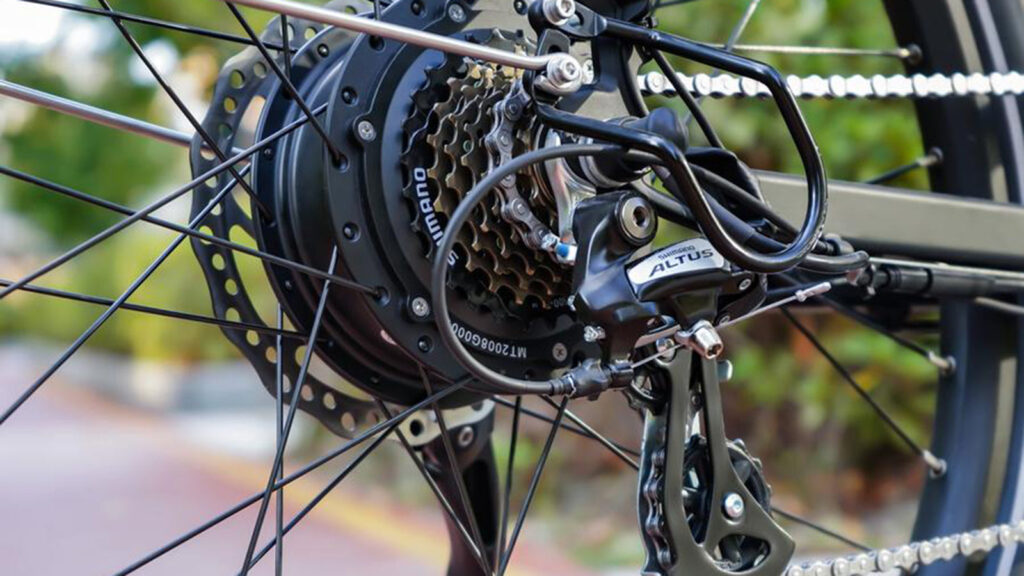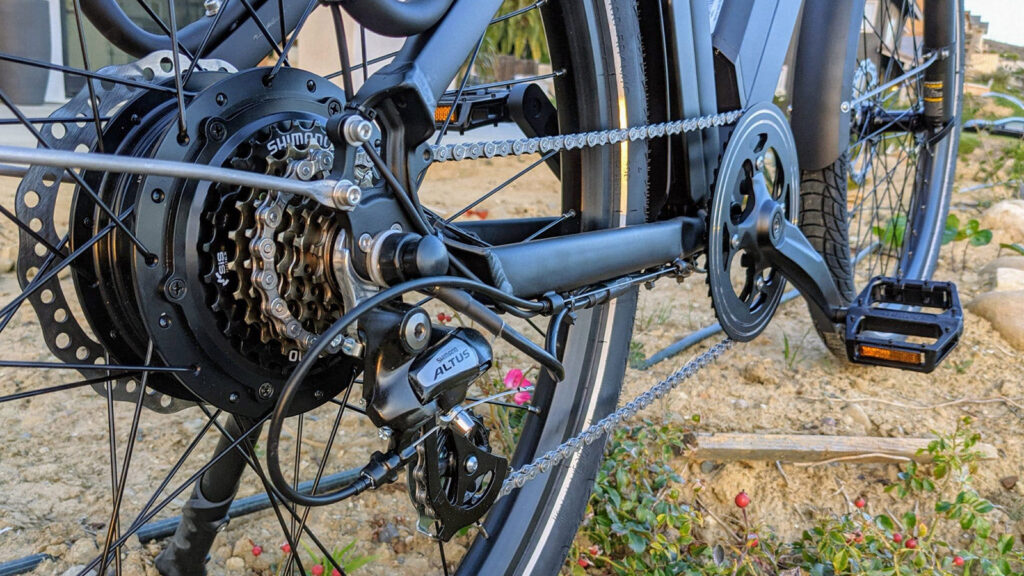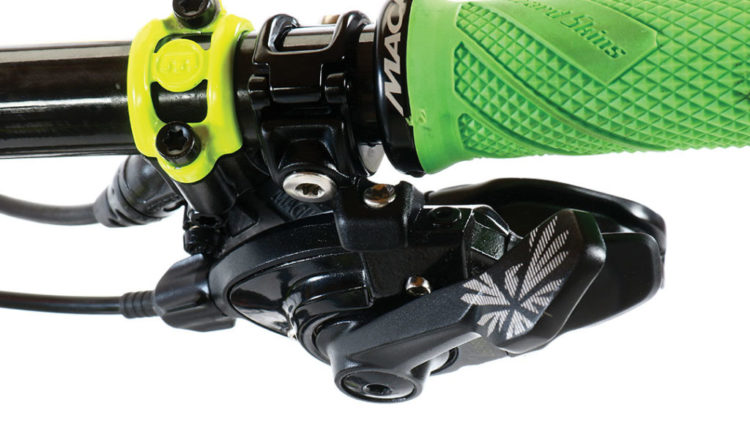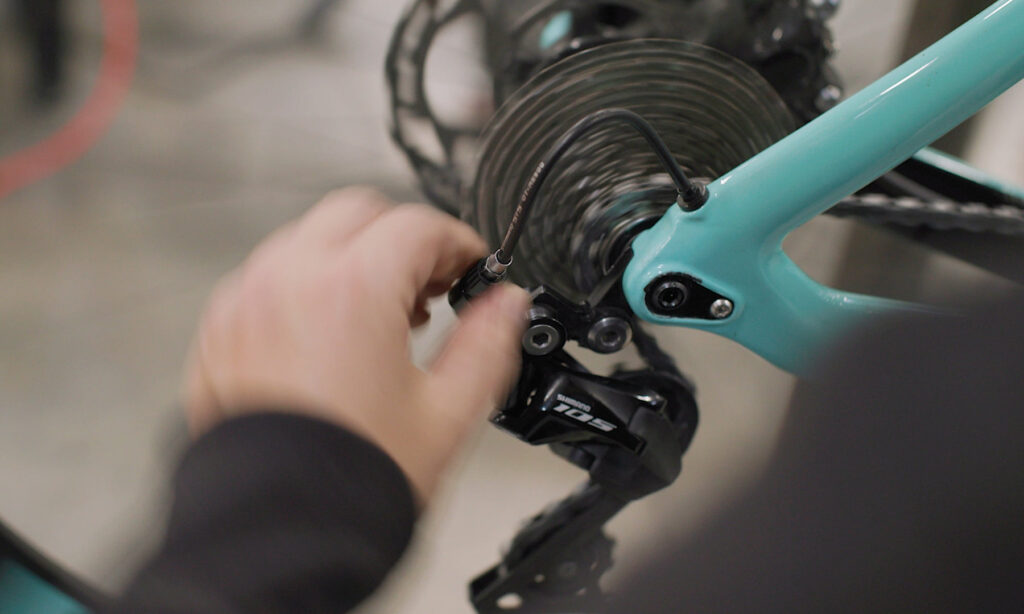Get ready to fine-tune your electric bike gears with these essential tips for optimal shifting. In this article, we’ll provide you with expert guidance on how to adjust and optimize your e-bike gears for a smooth and seamless riding experience. Whether you’re a beginner or an experienced rider, these gear optimization tips will help you get the most out of your electric bike. We’ll cover everything from basic maintenance techniques to advanced adjustments, making sure you have the knowledge and skills to keep your e-bike running smoothly. So, let’s dive in and make sure your gear shifts are as smooth as can be!
1. Understanding Your Electric Bike Gears
If you’re new to electric bikes or simply looking to gain a better understanding of how the gears work, you’ve come to the right place. In this article, we’ll dive into the components of electric bike gears, how they work, and the importance of gear shifting. We’ll also provide tips for smooth shifting, avoiding cross-chaining, and troubleshooting common shifting issues. So let’s get started!
1.1 Components of Electric Bike Gears
To understand how electric bike gears work, it’s important to familiarize yourself with the key components involved. The main components of an electric bike gear system include the front and rear derailleurs, shifter levers, cassette or freewheel, chainrings, and the chain itself. Each of these components plays a crucial role in ensuring a smooth and efficient gear shifting experience.
The front and rear derailleurs are responsible for moving the chain between different gears. The shifter levers, usually located on the handlebars, allow you to control the shifting. The cassette or freewheel, found on the rear wheel, consists of multiple gears with different-sized cogs. The chainrings, connected to the crankset, also have different sizes and work in conjunction with the cassette or freewheel to provide a wide range of gear options. Finally, the chain connects all these components together, transferring power from your pedaling to the wheels.
1.2 How Electric Bike Gears Work
Electric bike gears work on a simple principle: by changing the gear ratio, you can adjust the effort required to pedal and the speed at which you’re able to ride. When you shift into a higher gear (a larger gear ratio), you’ll experience greater pedal resistance but will be able to achieve higher speeds with less effort. On the other hand, shifting into a lower gear (a smaller gear ratio) reduces pedal resistance, allowing you to pedal more easily but at a slower speed. The key is to find the right gear ratio for different riding conditions, such as uphill climbs or flat terrains.
To shift gears, you’ll use the shifter levers to move the front and rear derailleurs. When you shift the front derailleur, the chain will move between the chainrings, while shifting the rear derailleur moves the chain between the cogs on the cassette or freewheel. By carefully selecting the appropriate gear combination, you can optimize your pedaling efficiency, speed, and overall riding experience.
1.3 Gear Ratio and Range
The gear ratio refers to the relationship between the number of teeth on the chainrings and cogs. A higher gear ratio means there are more teeth on the chainring compared to the cog, resulting in a harder gear. Conversely, a lower gear ratio means there are fewer teeth on the chainring, leading to an easier gear. It’s important to note that gear ratios can vary between different electric bike models and brands.
The gear range represents the total span of gear ratios available on your electric bike. A wider gear range allows you to tackle a variety of terrains and riding conditions, providing you with options for both high-speed pedaling and easy pedaling up steep hills. When choosing an electric bike, consider the gear range it offers to ensure it aligns with your riding preferences and needs.
2. Importance of Proper Gear Shifting
Now that you have a good understanding of the components and function of electric bike gears, it’s time to explore the importance of proper gear shifting. Proper gear shifting not only enhances your riding experience but also improves power transfer, reduces wear and tear on the components, and maximizes the efficiency of your electric bike.

2.1 Efficient Power Transfer
Efficient power transfer is crucial for getting the most out of your electric bike. When you’re in the right gear, you’ll be able to deliver power to the pedals effectively, resulting in smoother and more controlled acceleration. On the other hand, if you’re in an improper gear, you may experience power loss, inefficient pedaling, and even premature battery drain. By mastering gear shifting, you’ll be able to optimize your power transfer and make the most of your electric bike’s capabilities.
2.2 Reduced Wear and Tear
Proper gear shifting not only benefits your riding experience but also extends the lifespan of your electric bike’s components. When you shift gears smoothly and at the appropriate times, you minimize unnecessary strain and stress on the drivetrain, including the chain, cassette or freewheel, and chainrings. This reduces the wear and tear on these components, allowing them to last longer and perform optimally.
2.3 Improved Riding Experience
Imagine riding your electric bike with ease, effortlessly gliding through different terrains, and experiencing seamless gear transitions. That’s exactly what proper gear shifting can offer – an improved riding experience. By shifting gears at the right moment, you’ll have better control over your pedaling and be able to adapt to changing terrain conditions. This translates into a smoother, more comfortable, and more enjoyable ride overall.
3. Assessing Your Gear System
To ensure your electric bike gears continue to function properly, it’s important to regularly assess and maintain your gear system. By checking for wear and damage, lubricating and cleaning the components, and adjusting cable tension, you can keep your gears in optimal condition for top-notch performance.

3.1 Checking for Wear and Damage
Periodically inspecting your electric bike gears for wear and damage is essential for keeping them in proper working order. Look for signs of a worn-out chain, such as elongation or rust, and check the teeth on the chainrings and cogs for signs of excessive wear. Additionally, examine the condition of the derailleur pulleys and ensure they’re spinning smoothly. If you notice any significant wear or damage, it may be time to replace those components to maintain optimal shifting performance.
3.2 Lubrication and Cleaning
Keeping your electric bike gears well-lubricated and clean is crucial for smooth gear shifting and prolonging the lifespan of the components. Use a high-quality bicycle chain lubricant to lubricate the chain, especially after riding in wet or dirty conditions. This will prevent corrosion, reduce friction, and ensure the chain moves smoothly between the gears. Regularly clean the chain, cassette or freewheel, and derailleur pulleys with a mild bicycle-specific degreaser and a brush to remove any accumulated dirt or debris.
3.3 Adjusting Cable Tension
Proper cable tension is vital for accurate and precise gear shifting. Over time, cable tension may become loose or stretched, affecting the performance of your electric bike gears. To ensure optimal shifting, regularly check and adjust the cable tension as needed. This can usually be done using the barrel adjusters located near the derailleur or shifter levers. Refer to your electric bike’s user manual or consult a professional if you’re unsure how to properly adjust the cable tension.
4. Tips for Smooth Shifting
Achieving smooth gear shifting requires proper timing, anticipation, and a delicate touch. By following these tips, you’ll be well on your way to mastering the art of smooth gear shifting on your electric bike.

4.1 Proper Timing and Cadence
Timing is everything when it comes to gear shifting. Aim to shift gears before you reach a point where you’re struggling to pedal or losing momentum. Anticipate the upcoming terrain or slope and shift to a lower or higher gear accordingly. Additionally, maintain a consistent and comfortable cadence (the speed at which you pedal) as you shift gears. This will help ensure a seamless transition between gears and prevent any sudden jerks or drops in power.
4.2 Anticipating Gear Changes
Anticipation plays a crucial role in smooth gear shifting. As you approach inclines, descents, or changes in terrain, anticipate the appropriate gear changes in advance. This allows you to smoothly transition into the optimal gear without disrupting your momentum or putting excessive strain on your drivetrain. By being proactive and anticipating gear changes, you’ll be able to maintain a steady and efficient ride.
4.3 Feathering the Shifters
Feathering the shifters refers to making gentle, incremental adjustments when shifting gears, rather than forcefully pushing or pulling the levers. This delicate touch helps prevent overshifting or undershifting, where the chain may skip gears or get stuck between cogs. By feathering the shifters, you’ll ensure a smoother gear transition and reduce the risk of any mechanical issues during your ride.
5. Avoiding Cross-Chaining
Cross-chaining is a common shifting mistake that can put unnecessary strain on your electric bike’s drivetrain and decrease its overall performance. By understanding cross-chaining, knowing which gear combinations to avoid, and learning how to correct it, you can improve the longevity and efficiency of your gear system.

5.1 Understanding Cross-Chaining
Cross-chaining occurs when the chain is positioned at extreme angles, either on the largest chainring and the largest cog or the smallest chainring and the smallest cog. This misalignment increases chain tension, puts stress on the drivetrain components, and can lead to accelerated wear and reduced efficiency. It’s important to avoid cross-chaining and strive for a compact gear angle for optimal performance.
5.2 Gear Combinations to Avoid
To prevent cross-chaining, it’s best to avoid certain gear combinations. On a double chainring system, avoid using the largest chainring with the largest cogs and the smallest chainring with the smallest cogs. On a triple chainring system, you should avoid the largest chainring with the largest two or three cogs, as well as the smallest chainring with the smallest two or three cogs. By maintaining a straighter chainline, you’ll minimize cross-chaining and maximize the efficiency of your gear system.
5.3 How to Correct Cross-Chaining
If you find yourself in a cross-chaining situation, there are a few ways to correct it. First, shift to a more appropriate gear combination that aligns the chain with a straighter chainline. This may involve shifting to a larger chainring or a smaller cog, or vice versa. Additionally, you can adjust your riding style by avoiding extreme gear combinations and focusing on using gears that maintain a straighter chainline. By being mindful of cross-chaining and making the necessary adjustments, you’ll optimize your gear system’s performance and ensure a smoother ride.
6. Fine-Tuning Your Shifting
Fine-tuning your electric bike’s shifting is essential for maintaining peak performance and maximizing your riding enjoyment. By adjusting the front and rear derailleurs and the limit screws, you can achieve precise, reliable shifting that meets your specific needs.

6.1 Adjusting the Front Derailleur
The front derailleur is responsible for moving the chain between the chainrings. If you’re experiencing issues like chain rub or difficulty shifting between chainrings, it may be necessary to adjust the front derailleur. Start by checking the clearance between the derailleur cage and the chainrings, ensuring a gap of 1-3mm. Use the derailleur’s high and low limit screws to fine-tune the shifting range, making sure the chain moves smoothly and efficiently between the chainrings. Consult your electric bike’s user manual or seek professional assistance if you’re unsure about the adjustment process.
6.2 Adjusting the Rear Derailleur
The rear derailleur plays a critical role in shifting the chain between the cogs on the cassette or freewheel. To fine-tune your shifting, begin by checking the alignment of the derailleur hanger, ensuring it’s straight and in proper working condition. Next, adjust the cable tension using the barrel adjuster until the shifting feels crisp and precise. If necessary, use the rear derailleur’s high and low limit screws to prevent overshift or undershift. Remember to make incremental adjustments and test the shifting after each change to achieve the desired results.
6.3 Limit Screw Adjustment
The limit screws on both the front and rear derailleurs control the range of motion, preventing the chain from falling off the chainrings or cogs. If you notice the chain is falling off or not shifting fully onto the largest or smallest gears, it may be necessary to adjust the limit screws. Start by identifying the high and low limit screws on the derailleur and make slight adjustments, allowing the chain to move smoothly and securely within the desired range. Take your time and make incremental changes until the shifting is precise and reliable.
7. Troubleshooting Common Shifting Issues
Even with proper maintenance and adjustments, shifting issues may arise from time to time. Understanding common shifting problems and their potential causes can help you troubleshoot and resolve these issues effectively.
7.1 Skipping Gears
If your electric bike is skipping gears, where the chain jumps or slips between cogs without shifting, there may be a few potential causes. One common cause is a worn-out or stretched chain that no longer meshes properly with the cogs. In this case, replacing the chain will remedy the issue. Another cause may be a bent or misaligned derailleur hanger, preventing precise shifting. Checking and realigning the derailleur hanger can help resolve this problem. Lastly, cable tension that’s too tight or too loose can also lead to skipping gears. Adjusting the cable tension appropriately should solve the issue.
7.2 Excessive Noise
Excessive noise during gear shifting can be frustrating and may indicate underlying issues. One possible cause is a dirty or dry chain that lacks proper lubrication. Thoroughly clean the chain and apply a suitable lubricant to ensure smooth and noise-free shifting. Another cause could be improper front or rear derailleur alignment. Check the derailleur alignment and adjust if necessary, ensuring the derailleur cage is parallel to the chainrings or cogs. Lastly, worn-out or damaged jockey wheels or pulleys can create noise during shifting. Inspect the pulleys and replace them if needed to eliminate the noise.
7.3 Difficulty Shifting into Higher/Lower Gears
If you’re experiencing difficulty shifting into higher or lower gears, there are a few potential causes to consider. Firstly, cable tension that’s too tight or too loose can affect the shifting performance. Adjust the cable tension gradually until you achieve smooth and precise shifting across all gears. Another common issue is worn-out shift cables or housing. Over time, these components can become corroded or frayed, hindering proper shifting. If you suspect worn-out cables or housing, it’s advisable to replace them. Lastly, a bent or misaligned derailleur hanger can also cause difficulty shifting. Check the hanger’s alignment and realign if necessary to restore smooth gear changes.
8. Upgrading Your Gear System
If you’re seeking to enhance the performance of your electric bike, upgrading your gear system can be a worthwhile investment. Upgrades can provide smoother and more precise shifting, reduce weight, and improve overall efficiency. Here are a few considerations when upgrading your gear system:
8.1 Finding Compatible Components
Before embarking on a gear system upgrade, it’s important to ensure compatibility between the new components and your electric bike. Consider factors such as the number of gears, gear ratios, and derailleur compatibility. Consulting with a professional bike shop or the manufacturer of your electric bike can help you find the compatible components and ensure a successful upgrade.
8.2 Upgrades for Improved Performance
When upgrading your gear system, you have various options to consider. Upgrading to higher-quality derailleurs and shifters can provide smoother, more precise shifting. Lighter cassettes or freewheels and chainrings can reduce weight and improve pedaling efficiency. Additionally, investing in a wider gear range can offer more versatility, allowing you to tackle a broader range of terrains and riding conditions.
8.3 Seeking Professional Assistance
While some gear system upgrades can be performed at home with basic tools and mechanical knowledge, others may require professional assistance. If you’re unsure about the upgrade process or lack the necessary tools and expertise, consulting with a trusted bike shop or a bike mechanic is recommended. They can help you select the right components, perform the upgrade, and ensure that everything is properly installed and adjusted for optimal performance.
9. Maintaining Battery Efficiency During Shifts
As an electric bike owner, maintaining battery efficiency is crucial for extending your riding range and maximizing the lifespan of your battery. Shifting gears can impact battery consumption, but with efficient shifting techniques and proper battery maintenance, you can optimize your battery efficiency during shifts.
9.1 Impact of Shifting on Battery Consumption
When you shift gears on your electric bike, there is a temporary increase in power consumption as the motor adjusts to the new pedaling load. This momentary surge in power draw can marginally affect your battery’s charge level. However, the impact is minimal, and with proper shifting techniques and smooth transitions, the overall battery consumption during shifts remains relatively low.
9.2 Efficient Shifting Techniques
To minimize the impact on battery consumption during gear shifts, focus on efficient shifting techniques. By mastering the art of smooth shifting, you can minimize any abrupt surges in power demand, ensuring a smooth transition without putting unnecessary strain on the battery. Remember to shift gears before reaching steep inclines or challenging terrain to maintain a steady pedaling cadence and prevent sudden spikes in power draw.
9.3 Battery Maintenance Tips
To ensure optimal battery efficiency during shifts, proper battery maintenance is essential. Keep your battery clean and free from dirt, dust, and moisture. Store it in a cool and dry place when not in use. Regularly charge the battery according to the manufacturer’s recommendations to extend its overall lifespan and maintain its capacity. Consult your electric bike’s user manual for specific battery maintenance instructions tailored to your model.
10. Riding Emphasis and Gear Selection
The appropriate gear selection for different riding emphases is key to maximizing your electric bike’s performance and your riding enjoyment. Whether you’re commuting, engaging in off-road adventures, or enjoying leisurely recreational rides, here are some gear selection tips to match your riding emphasis.
10.1 Commuting
For daily commuting, gear selection should prioritize efficiency and comfort. Opt for a gear combination that allows you to maintain a comfortable and steady pedaling cadence, enabling you to cover the distance efficiently. Depending on your local terrain and physical fitness, find a gear range that strikes a balance between easing your pedaling efforts and allowing you to maintain an appropriate speed for your commute.
10.2 Off-Road and Mountain Biking
Off-road and mountain biking require gear selection tailored to the rugged terrain and varying gradients. When tackling steep ascents, choose a low gear combination that provides enough pedaling power to conquer the climb with ease. On descents or flatter sections, shift to a higher gear combination to maximize your speed and conserve energy. Experiment with different gear ratios to find the optimal combination that suits your riding style and the specific challenges of off-road or mountain biking.
10.3 Recreational Riding
For leisurely recreational rides, gear selection can be more flexible, catering to your personal preferences. Consider your desired speed, terrain, and the level of physical exertion you’re comfortable with. Adjust the gear combination to optimize your riding experience, whether you’re cruising along a scenic path or tackling rolling hills. With recreational riding, it’s all about finding the perfect balance between comfort, enjoyment, and a sense of accomplishment.
In conclusion, understanding your electric bike gears is essential for maximizing your riding experience and maintaining optimal performance. By familiarizing yourself with the components, learning how they work, and mastering the art of gear shifting, you’ll be able to fine-tune your electric bike’s gears and enjoy a smoother, more enjoyable ride. Remember to regularly assess your gear system, troubleshoot any issues, and seek professional assistance when needed. With proper care and maintenance, your electric bike gears will continue to provide reliable and efficient performance for many miles and adventures to come!




